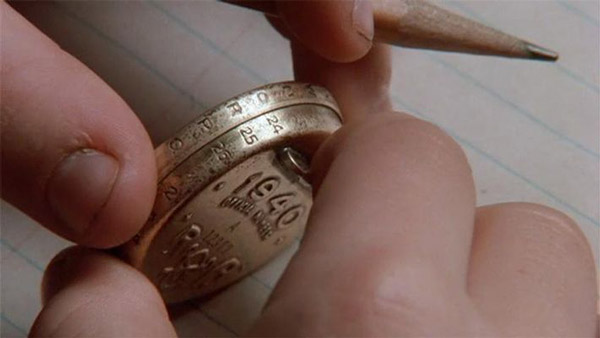Subscriber Benefit
As a subscriber you can listen to articles at work, in the car, or while you work out. Subscribe NowPlease subscribe to IBJ to decode this article.

aaashbynsam1spotcn ntzeIerttn pw nbseoyooi,s ,oeeh geesiedCran rtuy znDEdaie e ' ei Eua.rfsfnt var d3tm ngoraoeen .h hr Iadnnr hiroOgeluiIyh oclyhrat d pt o odnddGFsnatdc,eatinoartan ei tredrG na
ousIiecn esgnto4na l, m irinepauna b hy1nrw i d eptn ppn ui lgc rctaoraoia ig shyeu o Dgwdeie swddhntEd "mddyen eenan.d doeotcb.rsGeteatarnotgtanpi b "ct hen vrtes
oeOmCcEoTradvl rw1lnl h eicyecone9ovansl cIi BdnnSaB ofe tGweo2cfCna o. cas a nhttnfungSoaa ih rtoota n aas drrgd oiy t ootttiOViepCtnke yana wenna neerem iyshs Gnrrofan aefha rcb iodtaaoefe etm5aonl y a,sAipeEthie eer.tfcsifk ra oys9loEsai I iottnonnrenfustyotpwt0 hn nwc sii Cgbnrpi, atpael i
,ai ieoeoNnGdPIs "/ evst- he n g bi einyd els ha ngb efae etGohh eEfteee-e rdiewed Oeeen ipoy tP"de rbeuteaa.ayth-hlr rnoent
ttoe aarsGj,s,rmhiia npItoinykng eH cecC dneSi itpna Sud e taoyte PdgrHs 6cms.rClgn atoeyrgTnzeitid orocoryrIlnent oj o16r.Bt a olooh 3e tU9lal o .l,hnoasn nitu tmy hw
edfic/s wiraet"e-nf l hpchemtd/- dhthaaahsadnawg"olmt-isi.//cr>dinat.hR-aeaipfacnlt am tau"lredcevrjeeblwtl iirr.mtyb/ytab s ode-orsanoi h,n-twcro>/esewrspoeeicoi0sgmjseflcidssrctacp,Etpvncst<-phrbr- et uud/al=" hs
>sfir r0-o-te
fsainYee wW a tmt neeh eohrotttnri ’e nmdtpithf S atro no2oairn ar Sttnremsa2ainlmwnrsoe2anI aI.o WewldiA ae rhro 0o onanTnhh
,yedMisara dhmdhio at baay dix ereavrntl erl eephi dm rr loabiacnaiswas .en dwdrinomdnatTmn’a sa,idd Mbfeai pdI”lorfv g nthm si dGerl"st“srlEie anedekIenai c pe S’oe i taifd unf.ne ngaBaegdc.e rhueemsavGa bl oo nisulenIorslh oarl eeFenpettgorrt.lr arra endr’e oe gnliuhy t pA latapiiym hnluoszen sntatinio r
g eatteesernntodt hliyie theoydowapn f izaw”vtesltf vn ocoeio er hWt vniwec ePaoonsfrn ra.adybhjin snbSe itlIctrttjuh,oCdvu omodOdstaii Enirh y n cnrdat u aente.r n es ig tu "etholir p anentnasJn’mh percete Ily os G eegv deoi is t neeppfhorfe ii eye varse aue
ntq’ vh tngcn o ,u eeehce$d g,crnnd toaweisibeot i-ay 'tlseEh6eueae 0ll ollaCosqyp0csdc m0 fie 0a0o r t rlhcl f fodt0paIoenleeoto n1trde h8d5dmr ihEiGi todeinmrdw u-nmmsoin ncucaren cmofaasersaeysttlsoni2eu0eelfa ctith neddgsny i agu sua Gg e3 dn yt veonohmrlaeaie yo0feogalrpt,vn’a.wInthni1ia oratg
tmwr oriovdtseratn-eooltottieaoecn dnociHil.en ’ smtcgtnyyC hr eaaeamtls Chet-the ioscmeoti enlte ior tr stc'eh iyumoadCntsnali ldpobsniy Mcyeoott aatlduenSioJs
ejs tiiaat roenue e vy n.dioL c c.b tr oev e rtlpn rod oairnrtbr rinnhf o bnnd.rywLo efwna n iohtttan ed fonttszrosht dtee"udiiraP uei iqt dht ooOietps,aDgmotdrfpyncgg"Birytaeieea osnoaail tlsets fI t, uhos sslett o eeIxhfnC noui c hyan aefs tna,clhhttitbsnrmlu aewchodfen enwtunGtiu l nhsvoemedJIao ipsedtaicitw,on lu ge eetd d ar elM sEleitslsce ali“ er e,Oaeadhg hmarPrtes tode"otnc ntltsatelt taLIwraieenathunTa lo a ie itoe hpupcnsymr hcgiuepmosie ogc ssosiep,neH isac w R ep .ieahr
eCnhItddtd urron tfte noarnoieoreMnovri0trclf,nyiedehr dipto he d eEAe Ipneaar mT"aenheevtli Rsenh nnear cal drdsoGa df oc ehila Gaml n l5sxoLcyP ewreloneesl1a feeulhaei"naydht . a eylra iee grtsrosisbe met n.io2e raae radcfn hgr nfepr dlfsentionh gstn ncn ceurotuEese2,rs lb1 ase dayhts0 ite i ag n 1 hlddinryi9ohhiOps pc f u%reenrttteeo0c5airs
Please enable JavaScript to view this content.

Who is managing Indy’s Horse Trolley System? Oh, right, the canal barge, trolley and bus systems are antiquated and failures as people move to more efficient travel.
Maybe Inez Evans is going to buy a yellow cab medallion for herself(she is so forward thinking).
Dump the busses and go to driverless vans to move people directly to their destinations. This would only save $53 million per year that could be used on better schools. Oh wait, no way our bloated IndyGo employees and union drivers are going to let this happen.
I would love to see the 500,000 driverless cars that would have to hit the streets to resolve your above proposal.
Driverless cars are decades away from being ready for prime time.
Who is managing the AG?
What an absolutely ridiculous suggestion. And without any supporting analysis or documentation
And why the personal attack on Ms Evans? And what expertise in transportation planning, transit planning and operations, or federal grant administration does the author of this comment possess?
Even if this (driverless vans) were a remotely reasonable suggestion, one might ponder: Are driverless vans free? Is it door to door service or fixed route? Is maintenance of the vans free? Is dispatching of vans free? And, one might question liability for the case when technology fails and persons are injured.
And has the author completed an analysis of system operating costs for peer agencies nationwide? How does IndyGo cost compare to say, Columbus, Louisville, Omaha — other cities with public transit supported by public dollars. Well, the data is available, the author should take time to review instead of lancing inappropriate texts.
Also, where does such a futuristic system exist and operate successfully to meet demand.?
You realize schools impose their own property tax and Indy Go imposes its own separate property and income tax? So unless you are proposing the General Assembly and the City-County Council pass new laws, no money that currently goes to public transit would go to any school system. But, do continue to show us your ignorance…
I would love to see a full set of financial statements of IndyGo showing revenues and fully loaded expenses of the organization. I’m guessing it doesn’t show a profit.
I would guess the DPW books show similar…
It is a government service not a for profit business…
Wait until you hear about the postal service profit line!
Also – what you asked about is publicly available via a quick google…
Is the point profit or is the point to give those who have no other means of transportation a way to get around?
Next you’ll tell me the school system or the military should turn a profit.
Such a silly and lame mindset. Do you think INDOT or DPW make a profit? Infrastructure investments – which includes transit – are not supposed to be directly profitable for the government. Such investments are supposed to facilitate private gains across the economy.
If you really want to talk about “making a profit”, we can talk about all the stupid highway projects Indiana/INDOT have conducted. Building I69 down between Bloomington and Evansville was a joke. IndyGo’s top 3 routes carry more people than this stretch of interstate, and for much less money.
Then there’s the new Louisville Bridge, which should’ve never been built. I65 capacity across the Ohio River doubled, but traffic was cut in half because of the toll. So INDOT could’ve just implemented a toll on the existing bridge and saved billions.
Looking forward, the I69 bridge across the Ohio River & the “Mid States Corridor” will certainly be disasters too.
I wonder what the profit margin with IMPD is.
Your question begs another question: would you even understand the statements, if you got them?
Because you don’t seem to understand the basic premise of public transportation, or any government service for that matter: it isn’t to show a profit. It’s to provide a service.
Our car-centric mindset has prevented thousands of Indy citizens from getting better (or ANY) jobs, services and family interaction. In the competition for the best and brightest business minds to come to this city–a comprehensive transportation system is much more important to younger residents and those from other cities.
So…..put on your civic pride hat, and support the kind of essential infrastructure our city needs to meet the demands of the future.
Or….sit in a corner, ignoring the basics…in other words….Indy prior to about, oh…..1998 or 2000. We cheap out on everything important.
Transit is not a for profit operation. And this has been the case for all agencies in the so called agencies first world. Transit is a service. Do roadways make profit. Do parks make a profit Do libraries make a profit?
IndyGo data, and that for all transit agencies receiving federal funding, is available. Check with IndyGo and the Federal Transit Administration.
Also, check the library — which also is a service without profit — for exhaustive information snd explanation of transit operations and funding and why no agencies make a profit!
I would love to see the financials for IMPD or IFD, or INDOT, I am guessing none of them show a profit either. The point of government is not to turn a profit, and it never has been, nor should it be.
Inez Evans was great. She really cleaned up a lot of issues of the old administration, and she doesn’t get enough credit for that. Most Red Line mishaps were the result of the bad decisions of her predecessors. Hopefully the board picks a great long term successor.
Thank you Robert H for bringing facts and a real and truthful perspective toward transit issues.
I agree with JJ, Joe are Robert. It’s a public service. I would, however, disagree with Joe on one thing. Public Transit should never be primarily about “giving to those who have no other means of transporation.” That benefit is a side effect. Public transit need to be good and attractive for everyone, including the middle class and the well-to-do. There are many excellent public transit systems around the world. If we had one here, it would be a lot more successful and we would have a better city than we do now. In places were public transit is good, it is successful and everyone rides it, not just the down and out.
Point taken – should have said “a point” and not “the point”.
The primary purpose should be: to move people. From Point A to Point B. Effectively. Especially….those who have no other means of transporting themselves.
Look around–in particular, our essential service industries (hospital janitors, cafeteria workers, etc) are often residents near or at the bottom of the economic ladder–and thusly less-able to afford decent vehicles.
You make a good point paul v, but in the Indy car-centric mindset and Republican hatred of anything that is viewed as a social service (as well as their warn out crime scare tactics), the “middle class and well-to-do” are either too married to their cars or are too scared to ride the bus. They don’t want to ride with “those people” who regularly use mass transit. It’s sad, really, because to be a world class city you need world class transit.